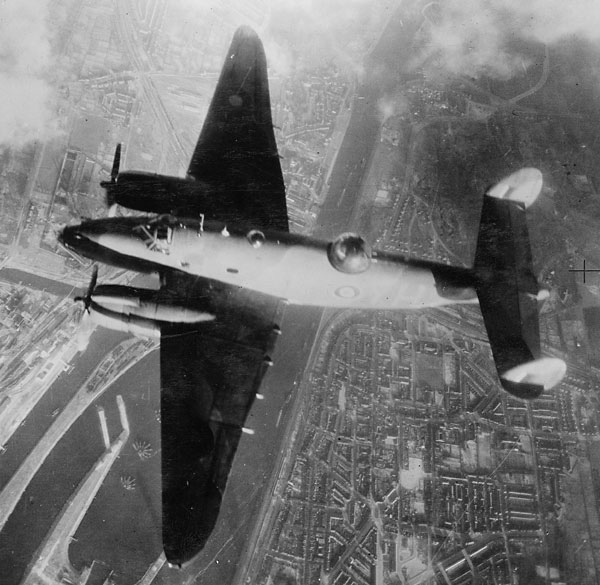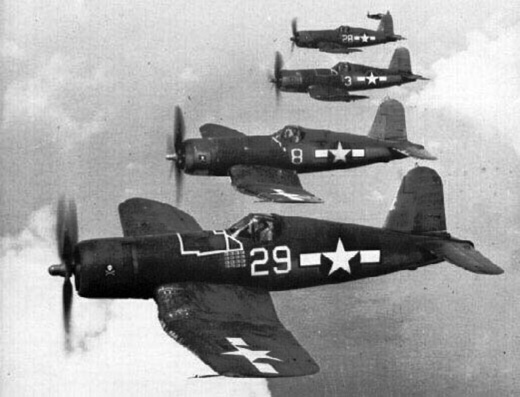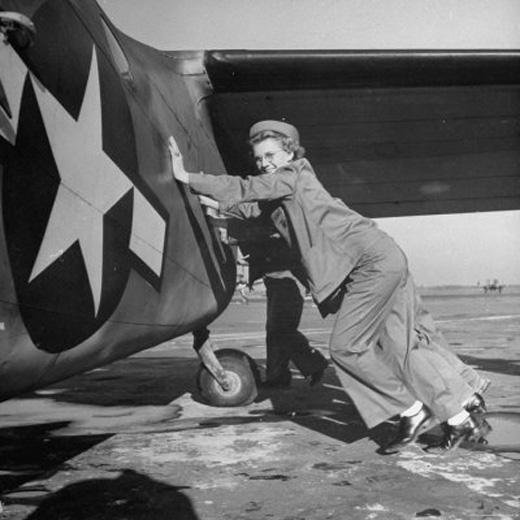Air Operations, Aleutians
28th Composite Bomb Group heavy and medium bombers attack Kiska, where 54th Fighter Squadron P-38s down 3 A6M2-N 'Rufe' fighter-bombers between 1150 hours and noon.
[Air Operations, Bismarcks
- 1 43rd Heavy Bomb Group B-17 attacks Rabaul.
- 1 90th Heavy Bomb Group B-24 attacks the sawmill at Ubili.
Air Operations, CBI
BURMA- 7 7th Heavy Bomb Group B-24s attack a marshalling yard at Rangoon.
- 9 341st Medium Bomb Group B-25s attack a marshalling yard at Paukkan and the rail line between Sagaing and Shwebo.
- P-40s attack a Japanese Army headquarters and barracks buildings at Lonkin.
Air Operations, Europe
BOMBER COMMANDDaylight Ops:
- In 5 different raids 34 Venturas are sent to the Ijmuiden steelworks and the ships at Boulogne and 22 Bostons are sent to the lock gates at St Malo. 41 planes bomb successfully.
- There are no losses.
A Ventura over Ijmuiden |
 |
- 466 aircraft including 164 Lancasters, 140 Wellingtons, 96 Halifaxes and 66 Stirlings carry out the heaviest raid on Lorient during the war.
- The ordinary squadrons of Bomber Command drop 1,000 tons of bombs for the first time on the already battered town. The raid is carried out in clear visibility and considerable additional damage is caused.
- 3 Wellingtons, 2 Lancasters, 1 Halifax and 1 Stirling are lost.
- 2 Mosquitos are sent to Duisburg and Essen, and there are 17 OTU sorties.
- There are no losses.
Air Operations, Mediterranean
1st Fighter Group P-38 pilots down 3 Ju-52s 50 miles north of Bizerte at 1500 hours.
[Air Operations, New Guinea
V Bomber Command B-25s attack Lae, and A-20s attack Japanese Army ground forces at Mubo.
[Air Operations, Solomons
6 307th Heavy Bomb Group B-24s make their unitís combat debut when they join 9 VB-101 PB4Ys, 11 347th Fighter Group P-40s, and 4 339th Fighter Squadron P-38s, escorted by 4 P-38s and 7 P-40s, in an attack against Buin and shipping in the Shortland Islands. The P-38s and P-40s down 6 A6M Zeros over Bougainville at 1245 hours, but 3 B-24s, 4 P-38s, and 2 P-40s are lost.
[Air Operations, Tunisia
XII Bomber Command B-26s attack the Tunis/El Aiouna Airdrome and, during the return, escorting fighters strafe German Army tanks near Station de Sened and motor vehicles near Faid.
[Battle of the Atlantic
Catalina 'J' of No 202 Squadron flying in support of convoy KMS-6 makes three attacks on U-boats on the surface. The first attack occurs at 2240, but the submarine dives before the attack could be made. An hour later another U-boat is spotted and 5 depth charges are dropped but all appear to have overshot the submarine. At 0105 a third U-boat is sighted on the surface and the aircraft dropped its last 2 depth charges. No results of this attack are visible. Subsequent analysis shows the U-381 was the victim of the first attack, damaged but survived. The second victim was U-620 which was sunk.
| Class | Type VIIC |
| CO | Oberleutnant zur See Heinz Stein |
| Location | Atlantic, NW of Lisbon |
| Cause | Air attack |
| Casualties | 46 |
| Survivors | None |
Eastern Front
The Soviets capture Novocherkassk. Russian control es established over the entire rail line between Rostov and Voronezh.
SOUTHERN SECTORNorth of Kharkov the 40th Army presses the Germans hard, Dergachi being taken in heavy fighting. Borisovka also falls. Other elements of 40th Army closes upon Grayvoron and Bogodukhov and enters the northern suburbs of Kharkov.
Heavy fighting also rages in the eastern suburbs as 3rd Tank Army pushes the Leibstandarte Adolf Hitler back to the city limits. Lanz is personallay order by Hitler to hold on to Kharkov at all costs in addition to securing a line from Poltava to Dnepropetrovsk with his very limite forces. The fact that the group is already heavily committed to the fighting at Kharkov means Lanz is unable to fulfil either task.
The XL Panzer Corps abandons its counterattack near Slavyansk and moves toward Kramatorsk. Group Hollidt loses Novocherkessk to the South Front.
Army Group B is officially disbanded and Army Group South comes into being once more. Army Group A retains control of 17th Army in the Kuban but is in effect redundant, taking no part in the battles to the north.
[ Marine Fighter Squadron 124 |
 |
North Africa
TUNISIAThe Commander-in-Chief of the Allied Force visits the US II Corps area to review the dispositions of the forces, since an enemy attack is imminent. Axis commanders meet to review the attack plans.
[ Marine Corps Womenís Reserve |
 |